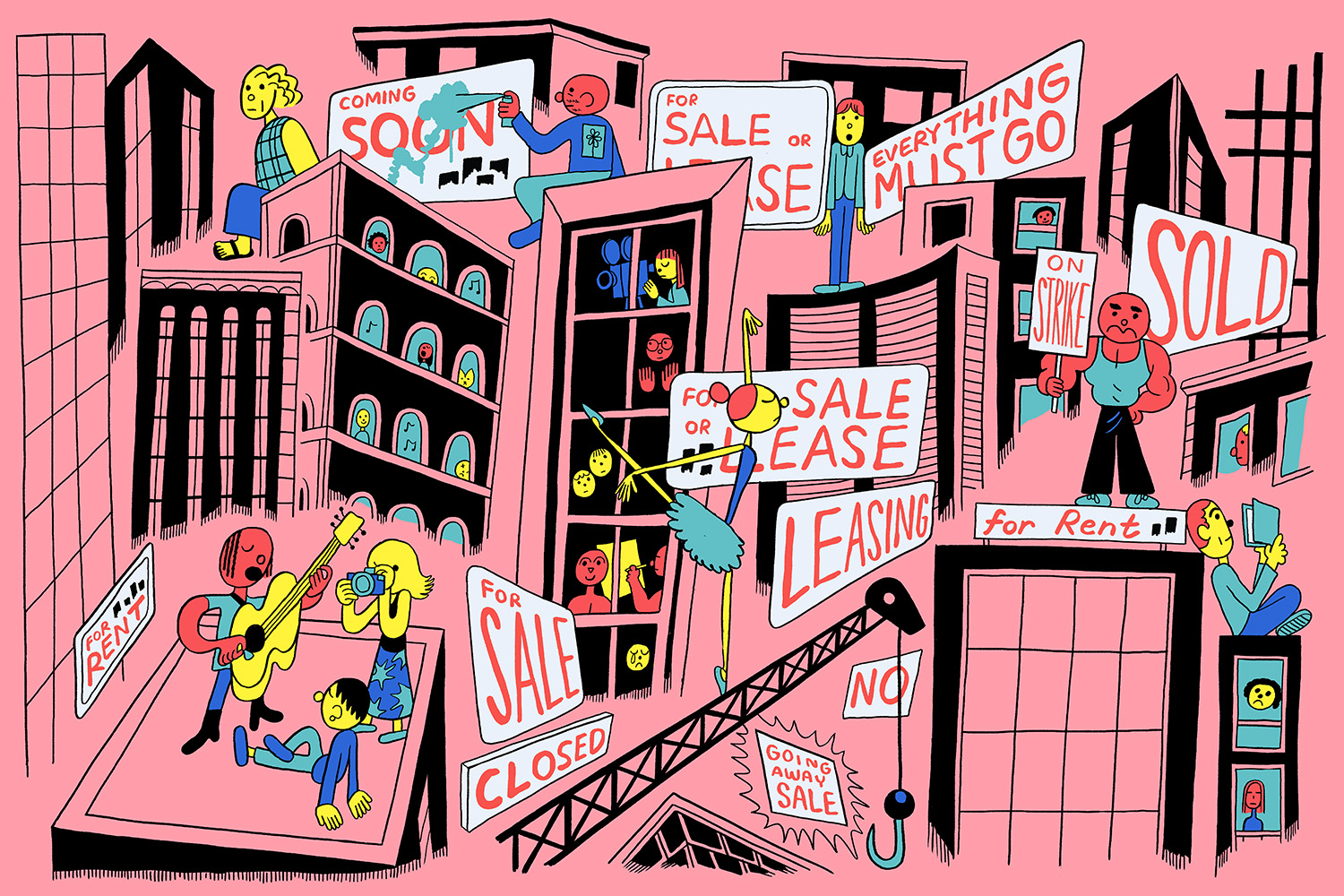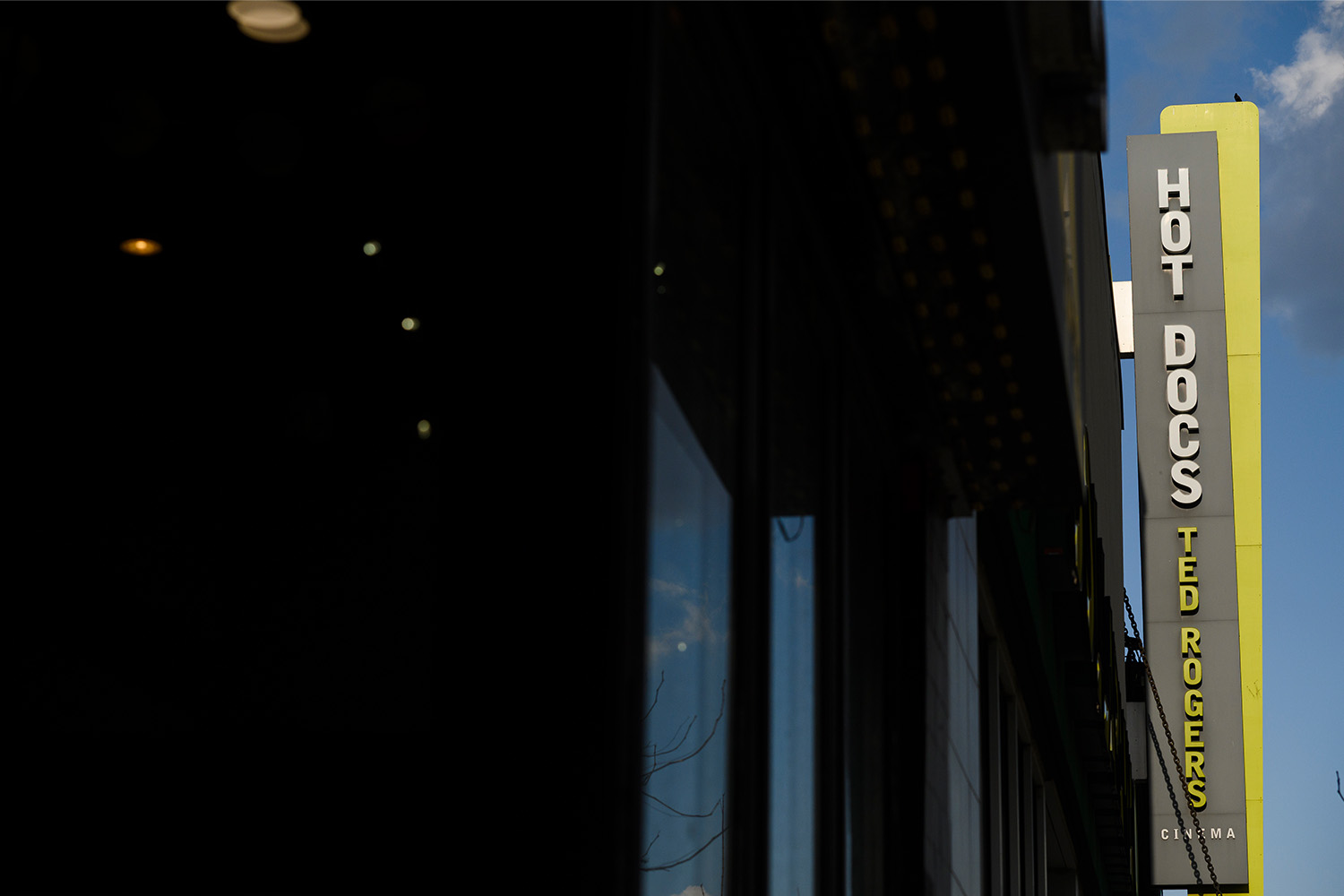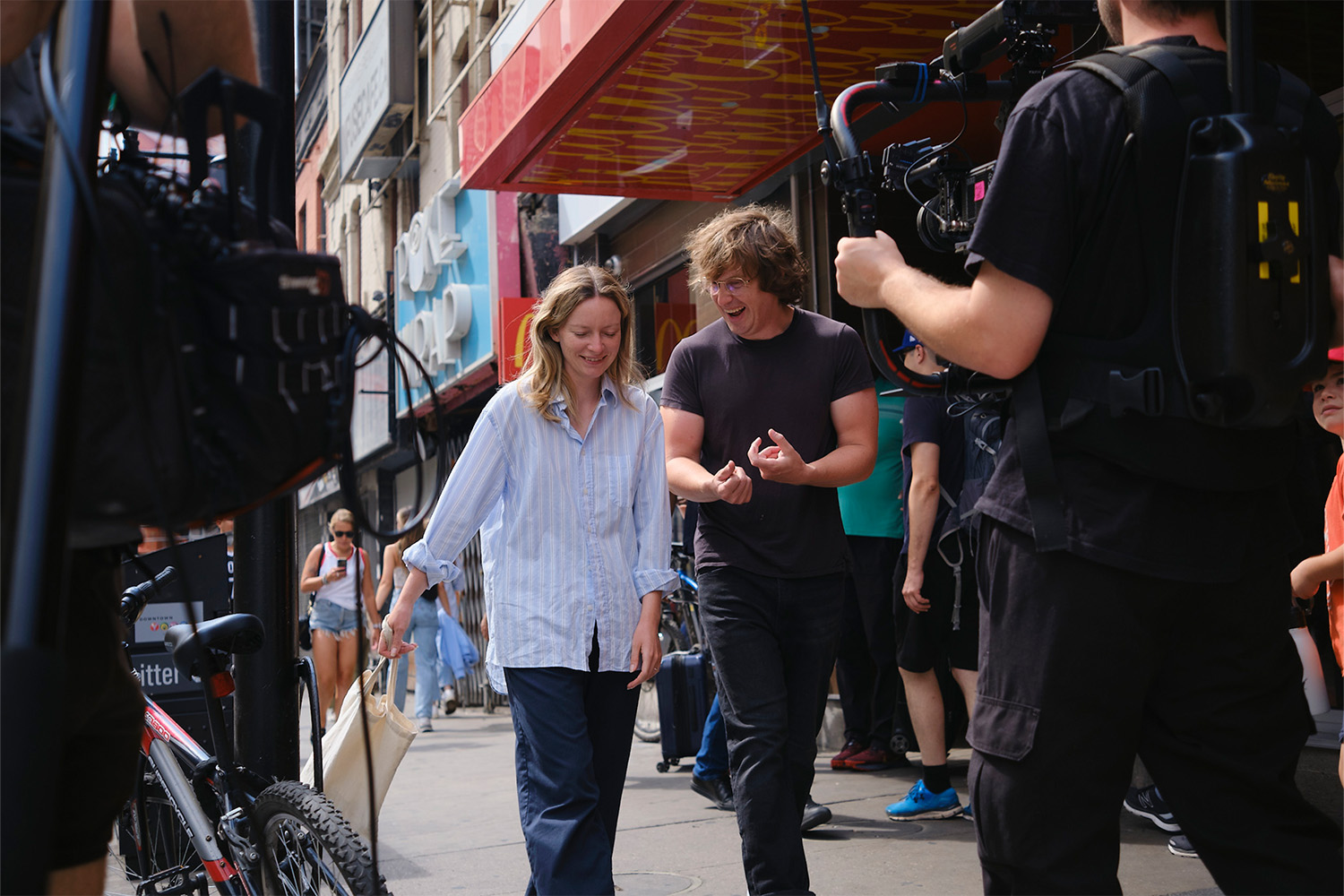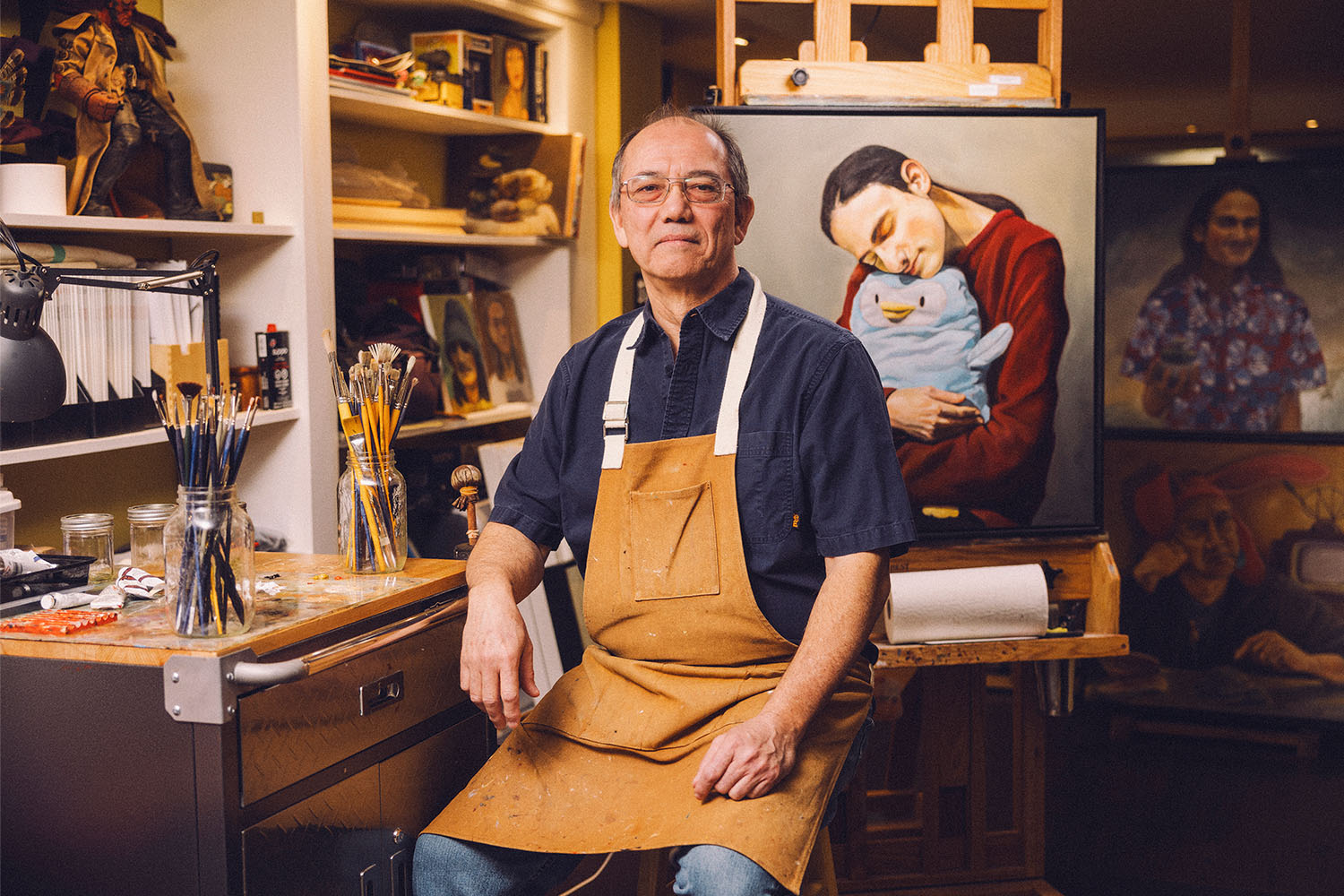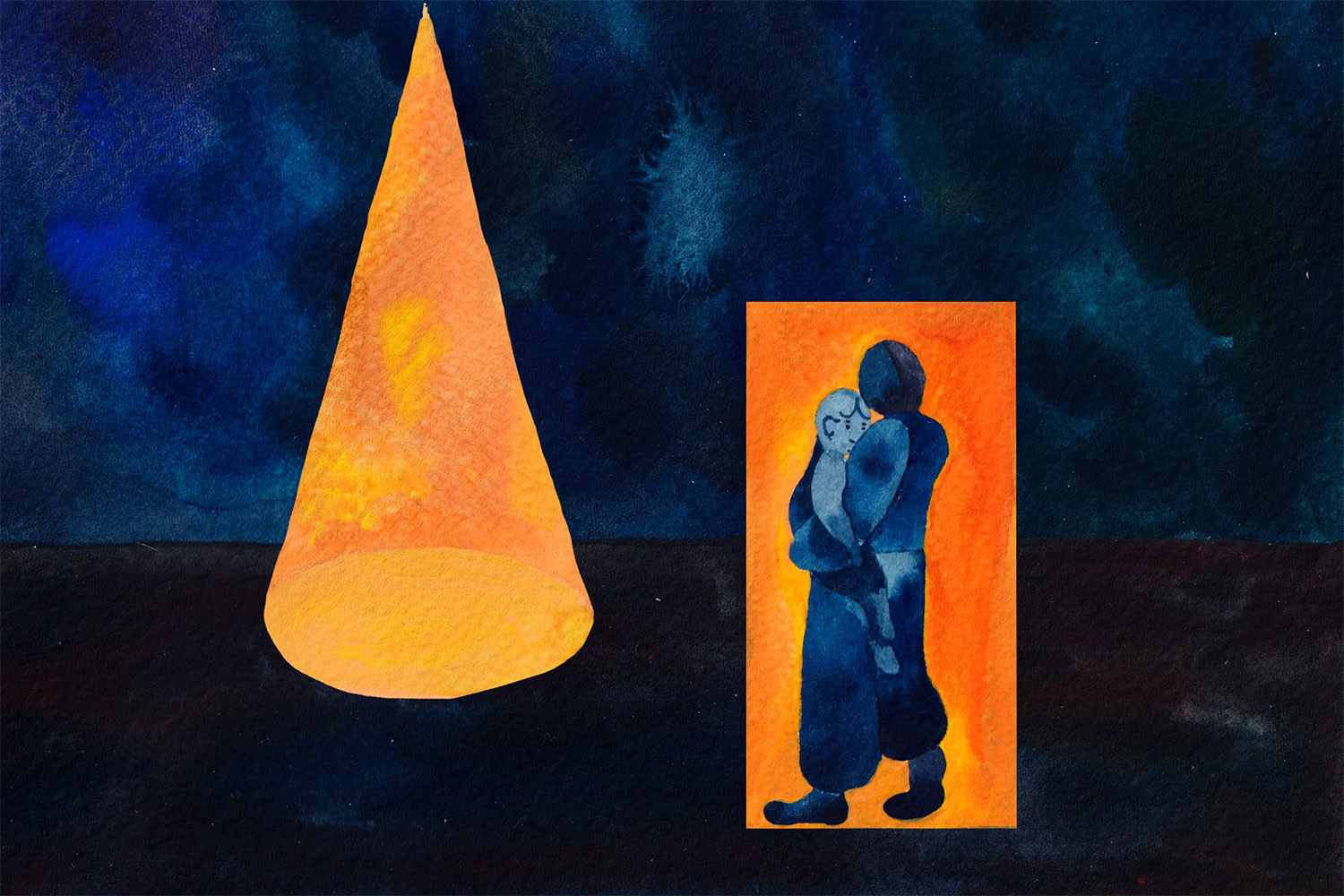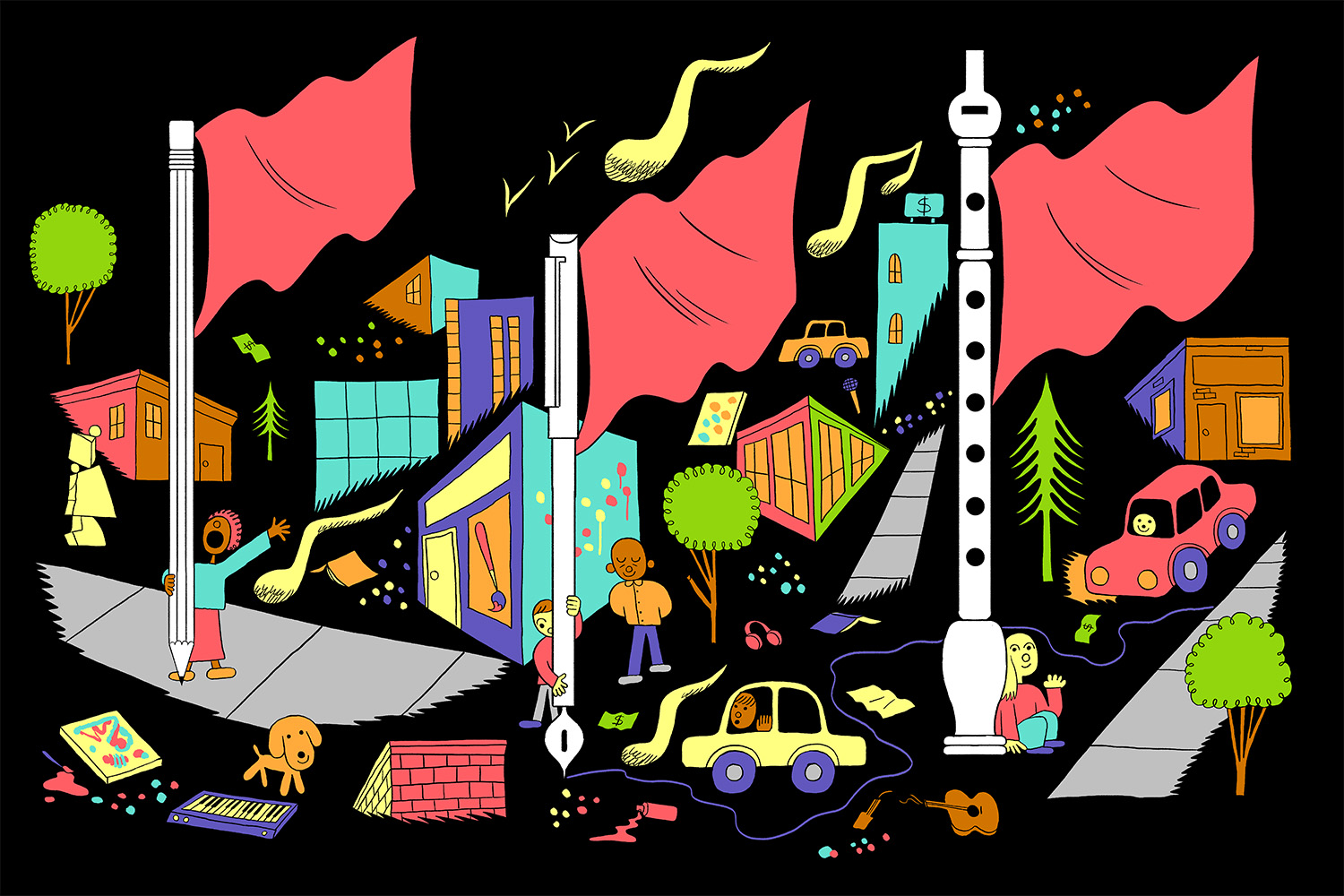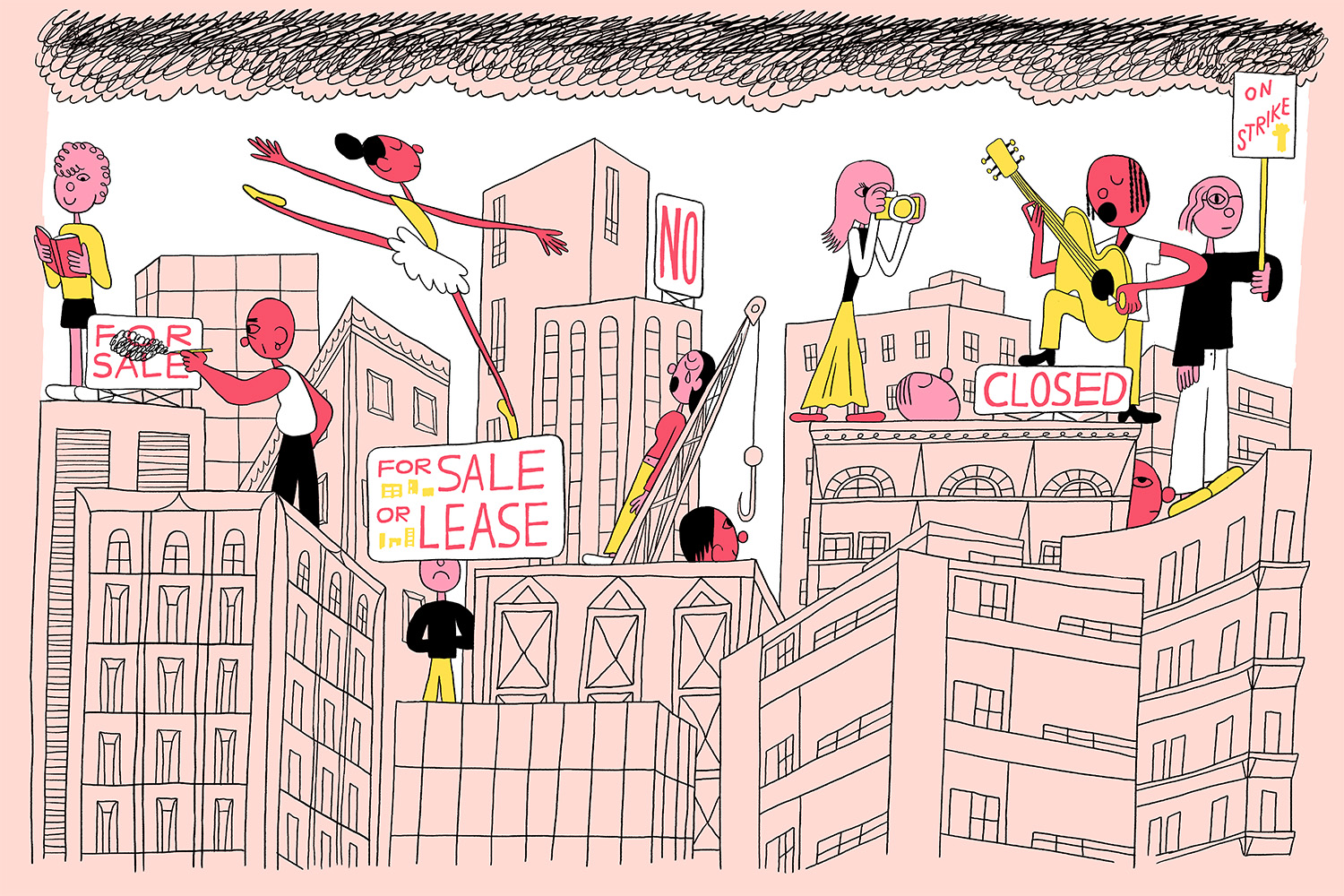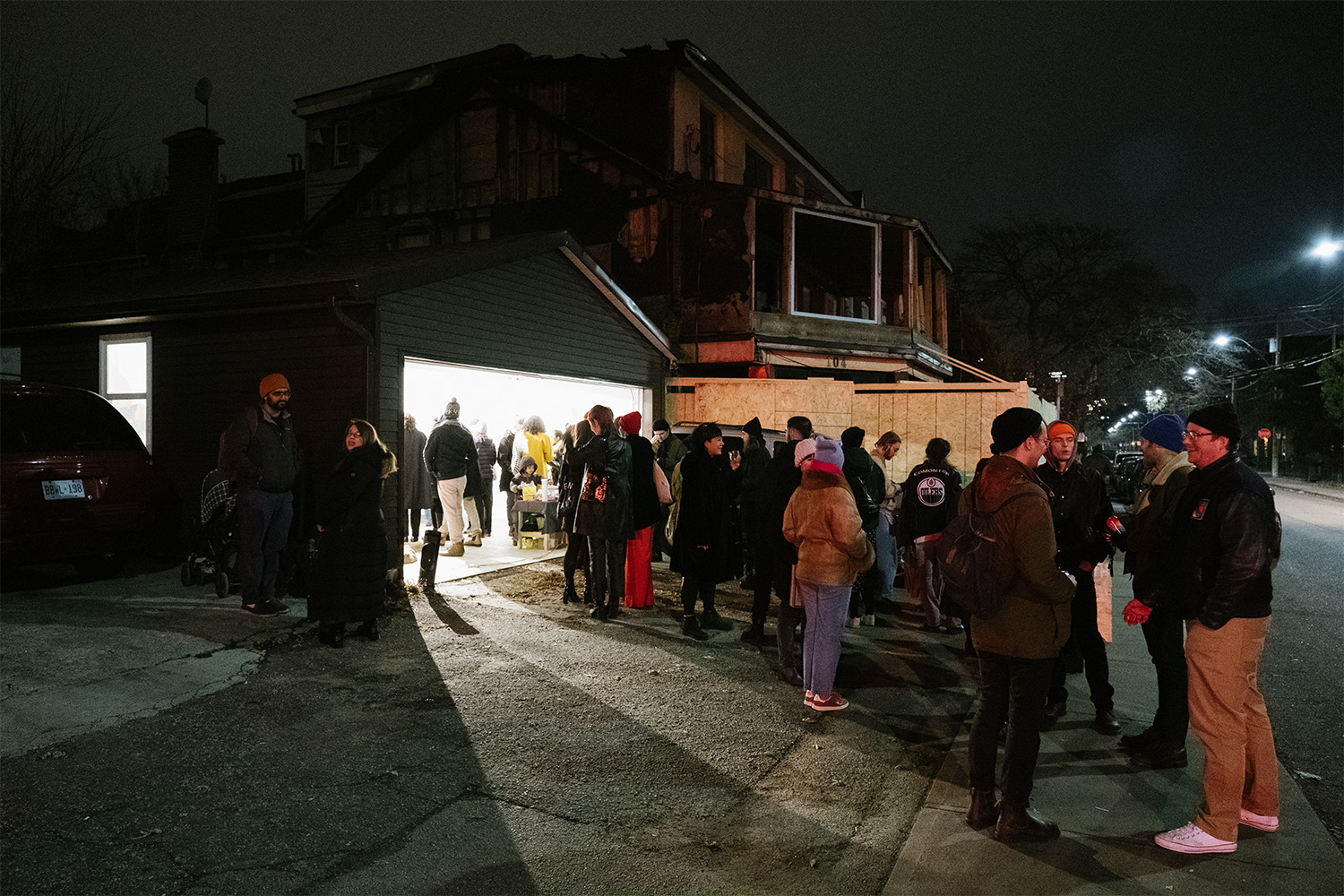

Tucked between Harbord and College Streets, the glow of the light from the garage stretched onto the road. It was past the Three Star Variety but before the rows of million-dollar bay-and-gable houses, and you could hear the space before you saw it. As you came upon it, people’s shadows spilled out and friends yelled hello, waving as you came closer. This garage was, for the first two years of its operations, the gathering space for Hearth, an independent art collective created by and for artists who do not see themselves in mainstream art spaces.
The four curators and founders, Rowan Lynch, Sameen Mahboubi, Philip Ocampo, and Benjamin de Boer, met first as two couples, connected by a web of mutual friends and passers-by no longer relevant to their work. (We’re all friends, though no one can exactly remember how we met.) The founders are all artists in their own right. Everyone except de Boer had an OCAD education, and they all shared a deep love for Toronto and a desire to create a gallery to serve it.
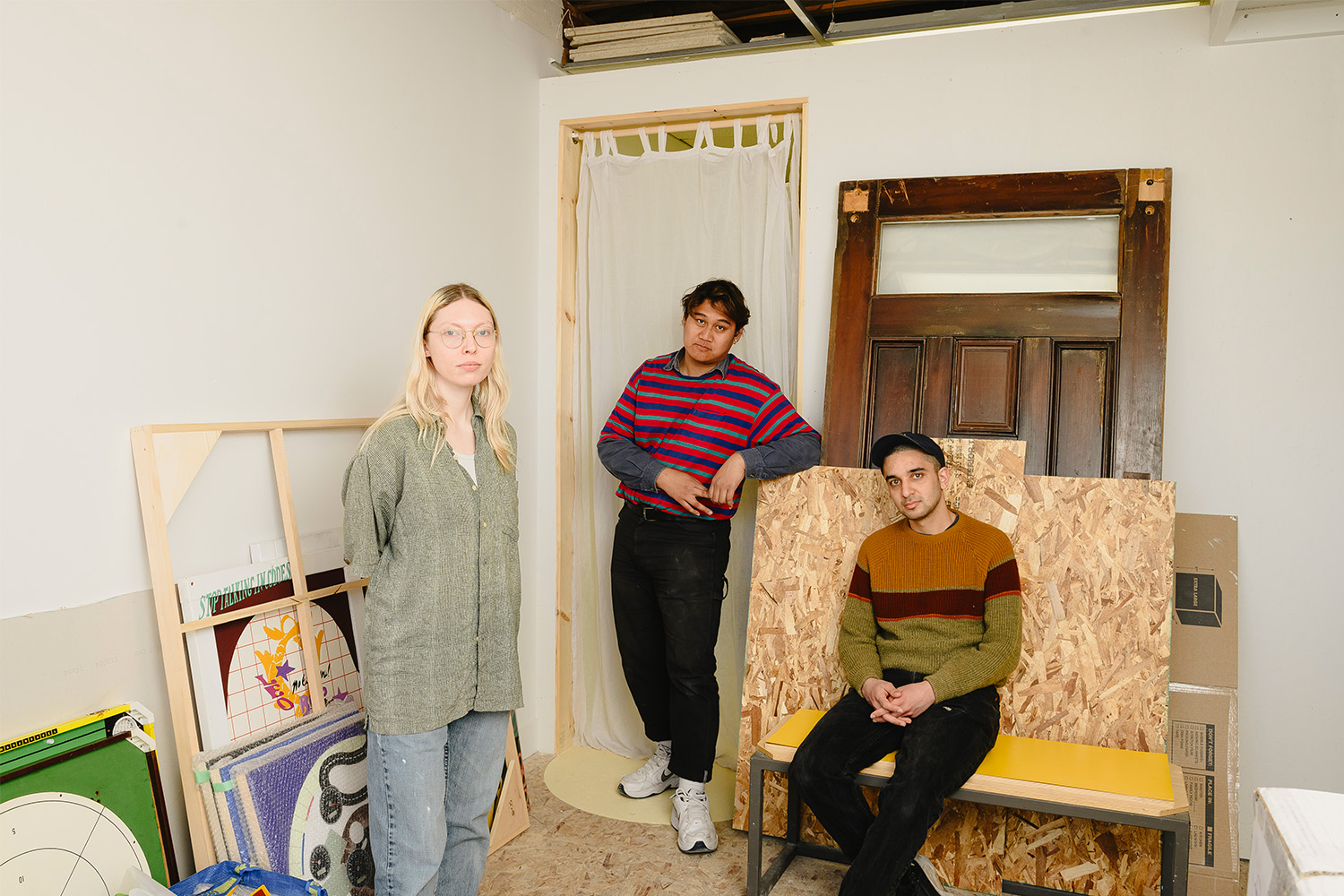
There wasn’t a set ethos at Hearth’s inception: just four queer people who found themselves at the foot of a very traditional path of fine arts. Eventually, their romantic relationships ended, and what remained was an “egoless” commitment to an exciting, innovative, alternative art space. “No one is getting famous from this,” Mahboubi said. But being fresh graduates with few outlets to showcase their work, “Hearth felt like a necessity.” Not only for themselves but for their community, as emerging artists and young people working several jobs across Toronto and the GTA.
These are people who knew each other first as friends, before they were collaborators and “gallery owners.” This principle of deep friendship has helped build Hearth. For millennia, people have gathered, broken bread and lived communally around hearth pits: “A hearth gathers us towards itself, and towards each other,” the space’s website reads.
Hearth opened in November 2019 in a 400-square-foot garage with monthly exhibitions and launch receptions that brought the community together. It’s a unique, self-funded space: everyone works a day job that funds Hearth, and the curators do not accept government grants or corporate funding, out of a fundamental desire to be left alone. It does help that the garage cost them just $100 each per month.
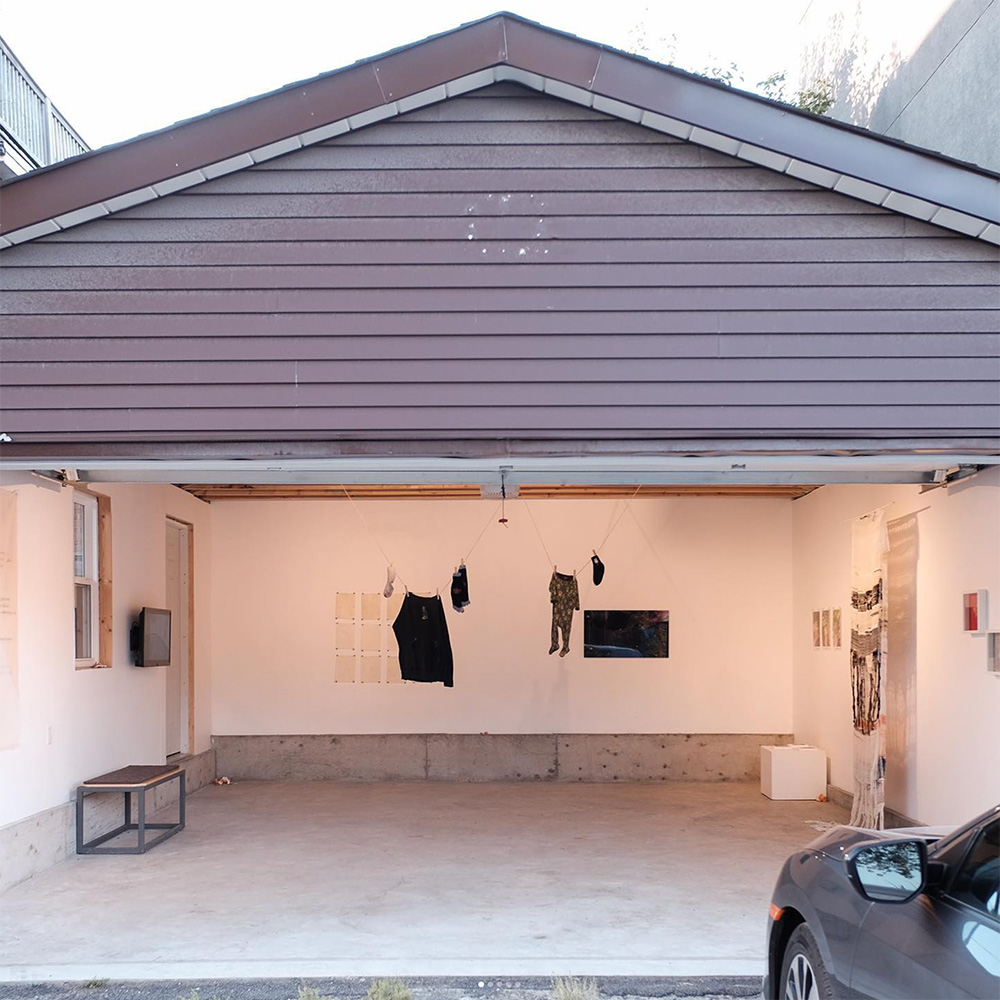
Hearth was created with the understanding that the way art is seen is just as important as the art itself. Three white walls provided the perfect canvas for experimental art curation: painting and sculpture sit next to multimedia pieces that experiment with video art and sound design; text-free exhibitions feature commentary recorded on a cassette tape. Its simplicity invites the founders and the artists—both well-known and emerging—to experiment in how they present the exhibition and what the art means to its creators.
The dreams for Hearth are even more ambitious: the founders envision a community space with screenings, classes, and lectures. When they were evicted from the garage in November 2021, after a year and a half of appointment-based exhibitions during the COVID lockdowns, that dream didn’t waver. “It’s not about having a space—it’s about the relationships that are occasioned by the space,” says de Boer. The eviction presented a convenient opportunity to slow down. Without a garage, Hearth became a curatorial collective and held exhibitions at the Dundas Museum & Archives. De Boer says that while he was unattached to the garage, he missed having a “container to commingle,” an opportunity for the founders to share their understanding of the exhibits with visitors. “Curating is fine and all, but what I like is our bodies.”
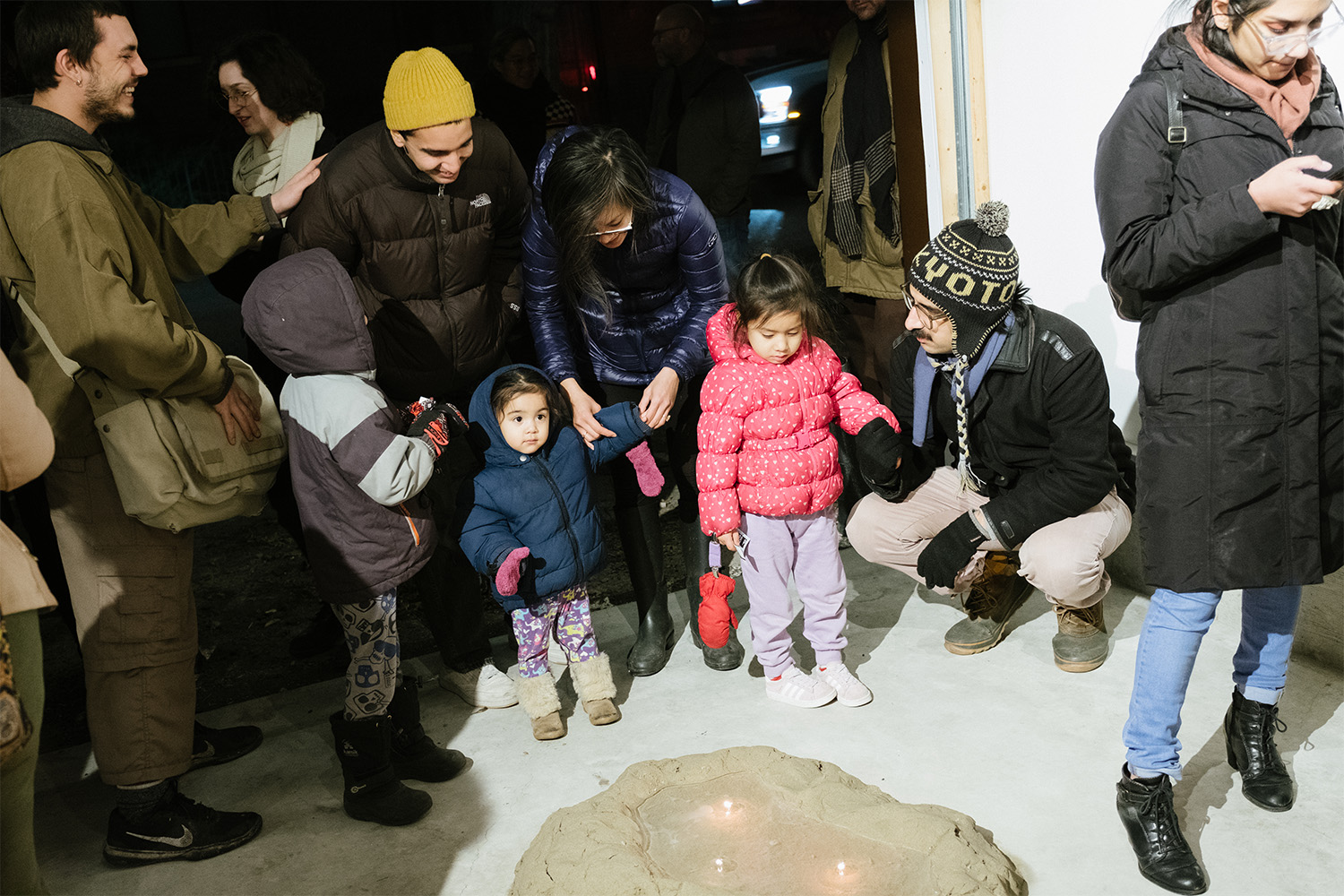
At the centre of Hearth, de Boer says, is the desire to eschew the “overdetermination” of identity that exists in mainstream art spaces: one facet of an artist’s identity becoming the sole lens through which their work is understood. Movements like Black Lives Matter or the mainstream push for equity have been skewed, as corporations see diversity as a means to sell and profit; now emerging fine artists, my friends and their friends included, are boxed into specific and singular identities that are easy to understand and digest.
This bleeds into how art is sold and advertised, and Hearth resists it. Hearth’s second exhibition, Hop the Twig, featured cartoonist Sami Alwani’s Drunk in Love, a simple series of hand-painted vignettes. The scenes were pieces of Alwani’s everyday life and while there are mentions of gay sex, the entire piece isn’t about gay sex or “the Queer experience” in Toronto.
I’ve been reflecting on my own changing relationship with identity. In high school, I used to write poetry, and had an embarrassingly pretentious phase of “conscious rap” (think Common and early Kanye West albums). When the Black Lives Matter movement began, it inspired me to speak about my own experience as a Black woman in Canada. With my poems, I sought to “say something” about the Black experience and the female experience and the Canadian experience. But as the progress we hoped for didn’t happen, and Trump was elected, I stopped writing poetry. It felt trite to write about my life as if being Black is something I consciously think about all day, every day. As if there are no other facets to my identity. As if my politics are only determined by my race. Hearth wants to acknowledge the realities of identity, but not be shaped solely by them.
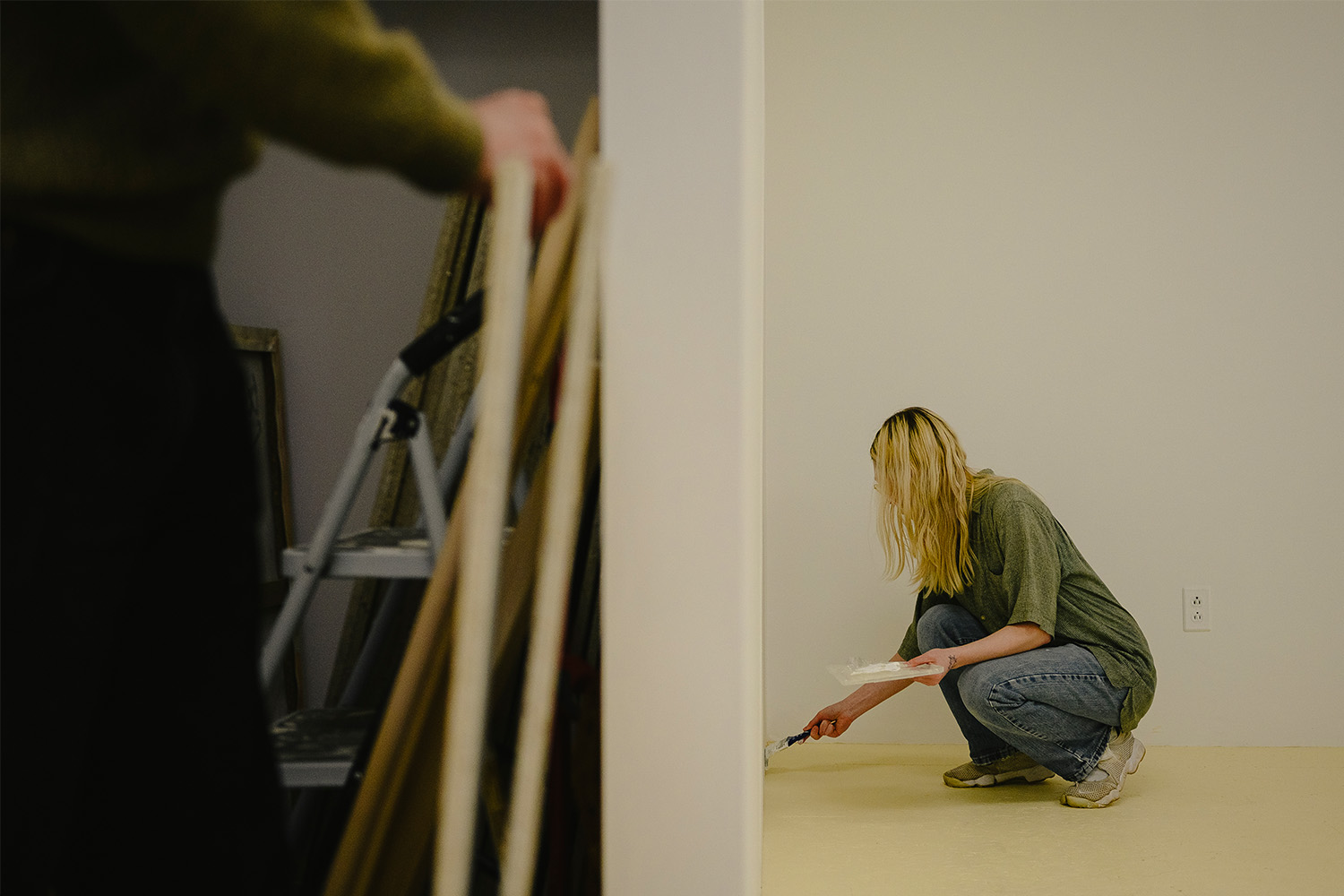
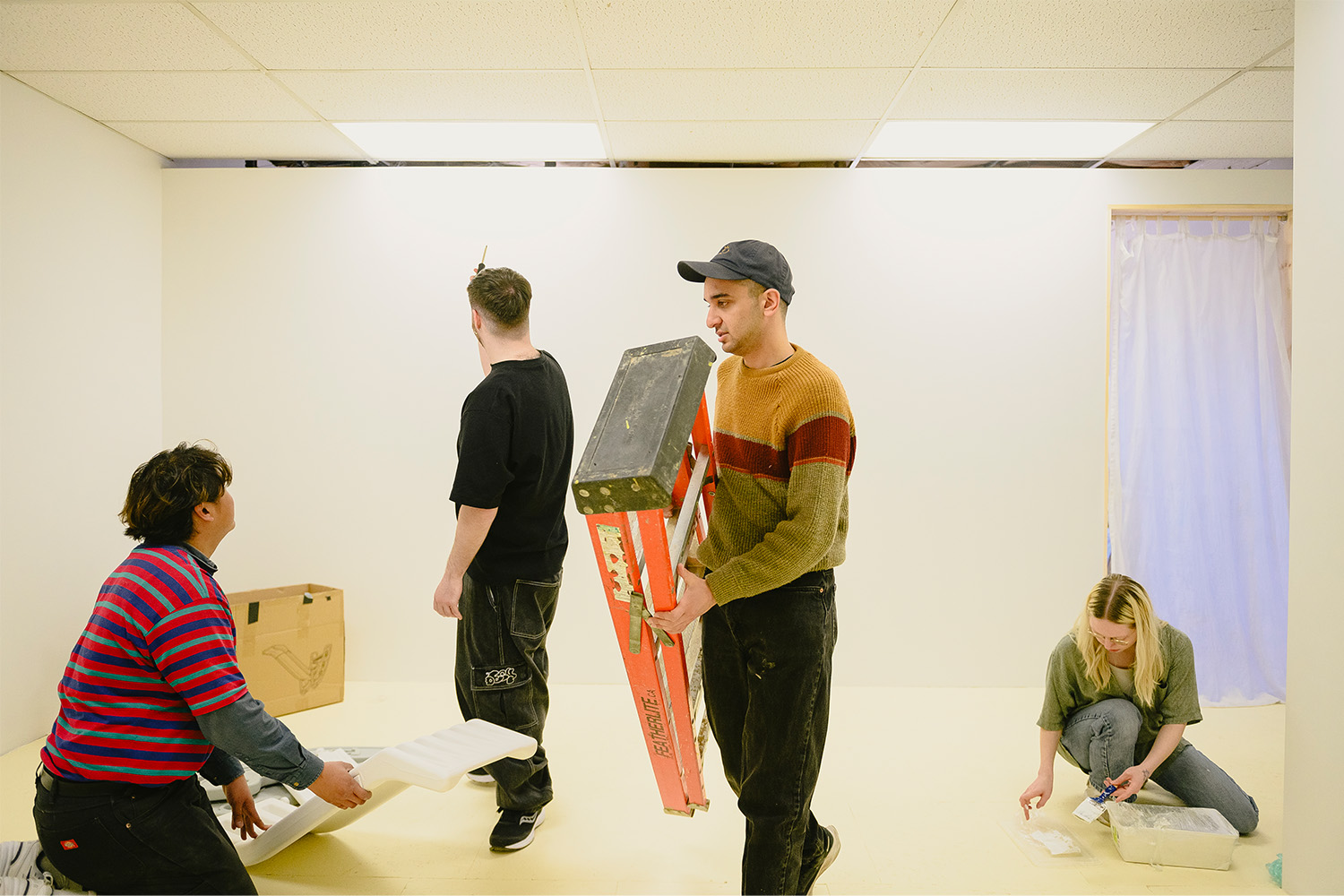
Hearth sees itself as building on the city’s strong history of experimental, do-it-yourself arts and culture, creating new space for collaboration and artistic community building. Everyone at Hearth is curating and making art outside of their own gallery. They work closely with the artists they showcase and always want to make sure people are having fun. Perhaps unintentionally—just by virtue of fostering camaraderie—the founders have also prioritized connecting artists they love to one another, strengthening networks across age and location.
Hearth lives between different modes: gallery, garage, community centre, an “adult drop-in,” as Mahboubi called it. This month, Hearth will reopen at 1267A St. Clair Ave. W., just off Dufferin Street, in an office space above a mobile phone shop. The new place finally has a bathroom. It isn’t at the whim of the elements anymore. Their new installation, New Strata: Five Years, will showcase the four artists featured in Hearth’s inaugural 2019 exhibition and will run from April 27 to June 8. Beyond that, the indoor space opens up a breadth of possibilities, and Hearth hopes to host the screenings, classes, and lectures the founders dreamt of, in addition to their usual gallery exhibitions.
Like the fires built in the centres of rooms for millenia, Hearth draws camaraderie, community, and storytelling towards itself. Whether knowingly or not, culture is made around these hearths. In the light of the fire, we can see each other better.
Correction—April 24, 2024: A previous version of this article misidentified the hometowns of the Hearth co-founders.
Our Art + Money issue was made possible, in part, through the generous support of Toronto Arts Council. All stories were produced independently by The Local.

